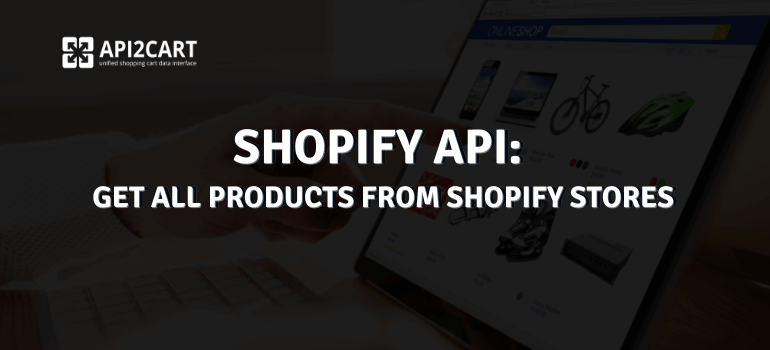
As a software developer, you want to keep up with the latest technologies and ensure your applications are able to interface with any merchant platform that comes available. Shopify is one such platform that has become increasingly popular for businesses selling online. An excellent way for developers to access data from these stores is through the Shopify API. So today, we'll be taking an overview of this powerful feature, discussing how it works, and diving into best practices on how to get all product data from Shopify stores using the API. Let's explore!
Definition of Shopify API
The Shopify API is a comprehensive set of application programming interfaces (APIs) that allow developers to access and modify the data associated with a store’s products, collections, customers, orders, and other objects. It enables developers to build custom applications for Shopify merchants and integrate their stores with external services. This API provides an extensive range of functions that can be used to read, edit, delete or create data in a store’s backend system. With the API, developers can use webhooks to receive notifications when certain events occur in a store’s database, such as when new products are added or when existing products are updated. Furthermore, the API allows developers to access shop settings and reporting information.
The Shopify API serves as a powerful and dynamic tool that enables software developers to effortlessly tap into the wealth of data from Shopify-based online stores, thereby unlocking new possibilities for innovation and growth. This cutting-edge API supports both the widely-used XML and JSON formats, ensuring seamless integration with diverse systems and technologies. Moreover, the API is designed to work perfectly with various HTTP requests, such as GET, POST, PUT, and DELETE, offering unprecedented flexibility and control.
Software Systems That Depend on Access to Shopify Data
Here is the list of various software solutions that depend on access to Shopify data:
- The inventory management system connects with Shopify to be able to retrieve products and orders from its stores. It allows such software to provide features related to inventory control and stock level synchronization.
- Mobile commerce services offer the ability to sync products, orders and other information from online shops and display them on smartphones in real-time. They can do such operations only by having access to the shopping platform's data.
- Data feed management software requires retrieving products with related data to send the information to various channels in order to establish excellent data feed services.
- Shopify integration allows the shipping management software to import orders and products from online stores based on this shopping platform, update tracking info and order statuses, monitor and sync inventory levels, etc.
- Marketing automation software is a system that automates marketing tasks and enables the delivery of personalized content to customers. For example, it can be used to send emails featuring new items, discounts and special prices; notify customers about order statuses; track cart abandoners. Marketing automation systems require access to shopping platforms' data to perform such features.
Shopify Integration Development
Shopify integration development is a process of tying any software application with the Shopify platform. By integrating your software with Shopify, you can extend the capabilities of your product and make it more useful for merchants who use Shopify for their online stores. This integration requires extensive knowledge and expertise in the Shopify API, which provides access to shop settings, collections, customers, orders and other objects associated with the store.
There is a solution that can help you connect your B2B software with Shopify easily. That is API2Cart - the unified shopping platform integration interface. It provides a great number of API methods for managing the data. For example, with their help, you can get the list of orders, products and customers from the Shopify e-store, update order info, create shipments, etc.

How to Get All Shopify Products
API2cart provides a variety of API methods for importing product data from e-stores, updating orders systematically, syncing inventory across various sales channels and creating and updating listings.
To get all products from Shopify using API2Cart, you need to register your free trial account on the service and add one of your clients’ stores based on it. After that, you will be able to use such API2Cart API methods:
- product.list method. It returns a list of products from the store. A sample response for this method looks like this:
- product.info method allows you to get information about specific Shopify products connected with product names, attributes, prices and descriptions.
{
"return_code":0,
"return_message":"",
"result":{
"products_count":5,
"product":[
{
"id":"69",
"name":"egestas",
"price":229.13
},
{
"id":"66",
"name":"arcu et",
"price":982.5
},
{
"id":"67",
"name":"egestas",
"price":1147.2
},
{
"id":"68",
"name":"tincidunt",
"price":182.3
},
{
"id":"58",
"name":"aliquet nec",
"price":403.42
}
]
}
}
During the free trial period of 30 days, you can develop an integration between your software and API2Cart and choose the pricing option that better suits your company's needs. Connection with API2Cart provides immediate access to all store data from multiple shopping platforms. In addition, we provide detailed API Docs, SDK and 24/7 customer support.



